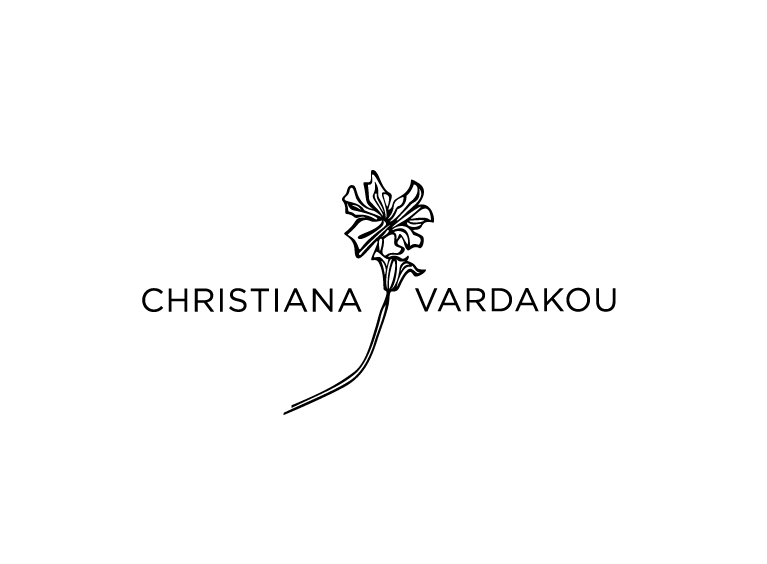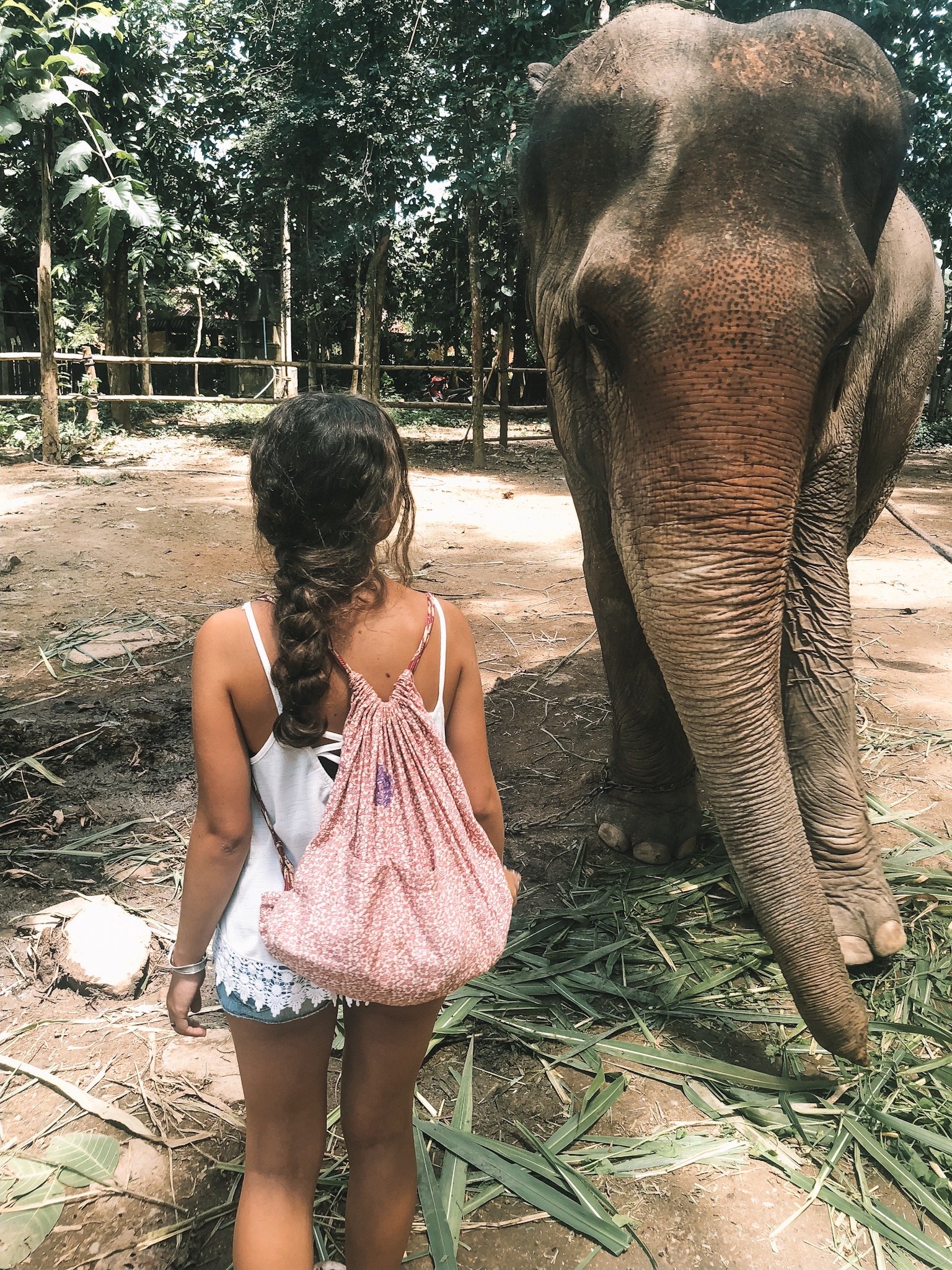Thailand Week One: Chiang Mai Old Town and Mae Wang
Having heard amazing things about Chiang Mai from family and friends, I decided to start my trip from there. When I booked my flights, I started doing some research and found Studio Naenna, a studio that creates beautiful eco-friendly textiles. I arranged to do two workshops with them (more about this will be on my next blog post). Apart from that, I was excited to experience the city having heard that there are countless things to do in Chiang Mai. There is delicious food, more than 300 Buddhist temples, great coffee, interesting shops with handmade products and lots of museums.
I started my first day exploring by visiting a few temples: Phra Sing, Wat Chedi Luang, Wat Phan Tao and Wat Chiang Mun. I love all the details of the windows, columns, doors and stairs. Everything is decorated with geometrical patterns, flowers and animals. Here are some photos for colour and pattern inspiration.
After that I decided to get out of the Old Town and walk east, towards the river. I wanted to visit some textile shops. Here are some of my top recommendations:
Kesorn Arts (154, Thapae Road Soi 4) amazing clothes and textiles that are handmade by different hill-tribes from the North of Thailand (some pieces are more than 80 years old!). It may look a bit dodgy from the outside, but you just have to go inside and start looking, there’s so much to see!
Vila Cini (30,32 Charoenrajd Road) This shop has really good quality silk textiles, table runners, cushion covers, and small antique items. However, it is quite well known and can be expensive. The items are handwoven and really well made, however they do not use natural dyes which is a shame.
Sop Moei Arts ( 150 Vharoen Rajd Road) Non-profit organisation. Good quality silk and cotton textiles, they also have a studio on the ground floor, so you can see them sewing up new products.
There was one more shop that I really liked but unfortunately I can’t find the name. It was on the same road as Sop Moei Arts and Vila Cini. There are two rooms in this shop, to go from one to the other you have to cross a small river and pass though a circular entrance. You can find clothes, homeware, traditional Thai pillows and more. Most of the textiles are naturally dyed and there are beautiful embroidered pieces as well. Here is a photo of the shop.
Japanese Craft Store (Tambon Si Phum, Amphoe Mueang) Really cool accessories and clothes. The ground floor is a tattoo studio, but just walk upstairs and explore!
HQ PaperMaker (Chang Wat Chiang Mai) Hand-made paper, cards and sketchbooks.
Suriwong Book Centre (54 Sridornchai Road, Lane 1) If you are looking for Textile Books (in English) this is where you should go! They also have travel guides and novels.
The second day, I visited the Lanna Folklife Museum, Chiang Mai Arts and Cultural Centre and the Historical Centre. You can get one ticket for all three and they are all next to each other.
The Chiang Mai Historical Centre provides information about the historical development of the city’s past. Here you can learn about the Lanna Kingdom, it’s legends, politics and language. Similarly, the Arts and Cultural Centre helps preserve the beauty of local customs and culture.
Most of the textiles and textile information are at the Folklife Museum. In Thailand it is believed that the motifs on textiles such as birds, waves, elephants, human figures and geometrical shapes are connected with supernatural powers that protect the wearer. There are three main weaving techniques, ‘Chok’ which is a discontinuous supplementary weft technique, ‘Khit’ which is a technique of continuous supplementary weft and ‘Mad Mi’ which is the weft ikat technique. The main natural dye used in most garments is indigo. The red dye is extracted from the lacquer produced by the Cocus lacca insect - also known as Sticklac, and similar to the cochineal that’s used in Mexico. The yellow colour is created from turmeric and the black from ebony.
For food, I’d say most restaurants in the Old Town are very touristy. However, I recommend It’s Good Kitchen and of course the night market! Make sure to have Pad Thai and try Khao Soi a Northern Thailand speciality.
A trip to Northern Thailand is not complete without seeing elephants and doing some trekking. On the third morning a friend and I set off for Mae Wang, a district of Chiang Mai province, as well as a river and national park. We stayed at the Chai Lai Orchid, and it was a bittersweet experience.
The surroundings are beautiful, the accommodation was okay, and the staff was very helpful and kind. As a partner of Daughters Rising, Chai Lai Orchid is a safe haven for women that are at risk of trafficking. The main purpose of DR is to help unfortunate mistreated women of local villages and refugees from Burma by educating them in hospitality and teaching them English to better their lives. The women that work at Chai Lai Orchid are from this programme.
While we were staying there the girls planned a back-strap weaving class for me. My teacher was a Kayan master-weaver. The Kayan are a sub-group of Red Karen, an ethnic minority of Myanmar. In the late 1980s and early 1990s due to conflict with the military regime in Myanmar, many Kayan tribes fled to the Thai border area. If you search Kayan people you will see that they are often called ‘long-neck people’ however, at the household and village I went to I did not see any women wearing these necklaces / neck coils, probably due to modernisation.
A lady picked me up from Chia Lai Orchid and took me to her village, passing through amazing landscapes. When we got there she introduced me to her mum who was my teacher. She couldn’t speak any English but it was amazing how much she taught me without saying a word. She spent five minutes weaving and then got up and pointed at the floor, inviting me to have a go. She sat next to me for the next two hours first putting her hands on mine and showing me how to do it, and later just observing that I am doing it right and correcting any mistakes. Her daughter cooked lunch for me, and we all ate together. After that I continued weaving for two more hours. I managed to weave half a scarf but couldn’t continue because my back was hurting a lot! Her daughter offered to take me back to the hotel and told me her mum would finish the scarf that evening and they would bring it back to me the following morning.
The pattern is a traditional pattern women from this hill-tribe usually use. It’s mostly plain weave, with small triangular spaces in between that are created by leaving a diagonal gap so that only the warp is shown (no weft) and then weaving diagonally for a bit before leaving the same diagonal gap from the other side. The wrap had two colours blue and purple and thats why the triangles have two different base colours. The weft was pink and white silk spun together. It was a perfect pattern for beginners since its easy but at the same time not that repetitive - the different colours and triangles definitely keep you interested for a long time.
The next day we rented an ATV and went in the jungle with a guide who was recommended by Chai Lai Orchid staff. It was amazing, we saw great landscapes and a beautiful temple. I highly recommend doing this.
So now it’s time for me to explain why I described this experience as bittersweet. First of all, its important to note that there are no wild elephants in Thailand anymore. Tourism destroyed this years ago, elephants have been domesticated and belong to people now. There are many tourist traps, many terrible places where the owners put chairs on the elephants in order for tourists to ride them. Chairs are really bad for their backs and hurt them. There also many companies in Chiang Mai that hit the elephants in order to teach them tricks, some of them even call themselves sanctuaries. Thankfully, that does not happen to the elephants at Chai Lai Orchid. In the afternoons, Chai Lai Orchid rents some elephants from a man from the village. Before Chai Lai Orchid started renting from this man, he used them for riding tourists around. The good thing about Chai Lai Orchid is that I did not see any elephant being hit, and chairs are not put on them. Still, throughout the morning and night (when the man has them, not Chai Lai Orchid) the elephants are chained which is something I didn’t know before I went there and I am not proud of. I feel like I did not do as much research as I should have done before booking to stay here. I hate that they are being chained, and it’s not fair, but if you compare it to other companies at least they are being treated better than most other organisations. Still, after this experience I did more research and I found a more ethical place to see elephants (see further down).
On our last day we were picked up from the hotel, and a driver took us into the jungle, then we did a two hour trek in the jungle, we saw beautiful landscapes, lots of animals and insects, we swam in a waterfall and stopped in a Karen hill-tribe village for food. The whole experience was lovely and truly unique. After that, we went on a bamboo raft through the river. When we arrived at the hotel, we were introduced to a teenager elephant, it was time for his bath in the river, he went in by himself and then we joined splashing him with water while he sprayed us with water using his trunk. When he had enough, he came out of the water and went a bit further away to eat. Then we went to a walk in the jungle with five other elephants, no one rode them we just walked next to them. I think and hope that all the elephants enjoy these afternoons as much as we did.
After some research, I found the Elephant Peace Project in Chiang Rai. The Karen hill-tribe have always been working and living with elephants and they consider the elephant as part of their family, rather than an animal that works or pet. My parents visited this organisation a few weeks ago. When they arrived they were welcomed by a Karen family that lives in a village in the jungle with their elephant. The elephant wasn’t there when they arrived, they first sat with their hosts who explained many facts about elephants and how they behave. After a while the elephant came by himself, and my parents were allowed to touch and feed him. They all went for a walk in the jungle together, and after some time my parents and their hosts started walking back to the house, while the elephant stayed there. This is the most ethical elephant experienced I’ve come across in Thailand so far. Hopefully, more places like this will exist in the future and the maltreatment of elephants will stop.


































